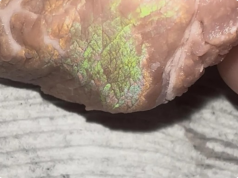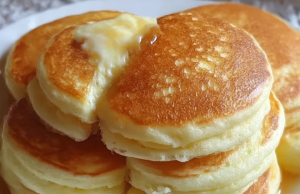Tucked in the back of a dusty drawer at a Lincolnshire estate sale—wrapped in faded oilcloth and carrying the soft scent of beeswax and time—it waited.
A small wooden object. Smooth with age. Carved with quiet care. Utterly inscrutable.
To the casual glance, it might pass for a child’s toy, a broken tool, or a simple paperweight.
But to those who know the subtle language of country kitchens—those who’ve run their fingers over worn handles and felt the weight of generations in a cast-iron pan—this piece spoke. Not loudly. Not urgently. But with the quiet certainty of hearth smoke and rising dough:
“I was useful. I mattered. I belonged here.”
Welcome to the curious case of the “Notched Beech Wand”—a humble kitchen relic from early 20th-century rural England, recently discovered in the Midlands, that has historians and culinary folklorists alike gently stumped:
What on earth was this used for?
The Artifact: A Closer Look
- Material: Solid beech wood, darkened by decades of handling
- Size: 8 inches long, 1 inch in diameter
- Distinctive features:
- Seven evenly spaced notches along one side
- One end gently tapered
- A smooth, burnished surface—polished not by machine, but by hands
- No metal. No hinges. No maker’s mark.
It was found nestled among cast-iron pans, earthenware jugs, and a cook’s apron faded soft with use. There’s no doubt—it lived in the kitchen. But how? And why?
Leading Theories: What Was It For?
🥛 Theory 1: Butter Worker or Butter Mold Guide
Before refrigeration, butter was churned by hand and often shaped for market or storage. Some believe the notches served as portion markers—each groove representing a half-pound measure, helping farm wives shape uniform pats for fair trade or household use.
As Dr. Eleanor Whitby, domestic historian at the University of Leicester, observes:
“They’d press the butter against the wand, using the notches as guides—quick, accurate, no scales needed.”
🥖 Theory 2: Dough Divider or Bread Scoring Tool
The tapered tip could have scored loaves before baking; the notches, spaced just so, might have helped divide dough into equal portions—for rolls, baps, or tea loaves in large families or village bakehouses.
🫖 Theory 3: Tea or Spice Measurer
Small by modern standards, but precise for its time: one notch for a single cup of tea, two for a pot, three for company. In an era when every leaf and pinch was precious, such a tool made sense—quietly ensuring fairness and flavor.
🕯️ Theory 4: Candle Wick Gauge
Less culinary, but no less plausible: in homes where light and cooking shared the same space, this wand may have measured wick lengths to ensure steady, smoke-free burning—a small but vital act of daily care.
Why This Matters: More Than Just Wood
This isn’t merely a curiosity. It’s a thread—thin but strong—leading back to a vanishing way of life. A time when kitchens were not just for cooking, but for sustaining: economy, ingenuity, memory, and community all simmered in the same pot.
Before digital scales and pre-measured packets, rural cooks trusted their hands, their eyes, and tools like this—objects shaped not by industry, but by necessity and repetition.
Dr. Whitby puts it tenderly:
“Every nick, every smoothed curve tells a story—of hands that fed families through war, through shortage, through harvest and holiday. This isn’t just a tool. It’s a silent witness to resilience.”
Could It Be… Something Else?
Local lore offers a quieter possibility: that such wands were “fairy measures”—left by cottagers near the hearth to honor the kitchen sprites believed to guard the home’s warmth and bounty.
Historians don’t cite this in journals—but they don’t dismiss it, either. In rural life, ritual and routine were often one and the same. A practical notch could also be a gesture of gratitude. A tool could be a talisman.
Help Solve the Mystery
Have you seen something like this in your grandmother’s cupboard?
Did your family call it a “sizing stick,” a “butter bat,” a “dough tally”—or something else entirely?
We’d love to hear from you.
Because sometimes, the truest history isn’t stored in glass cases—it lives in memory, in stories passed hand to hand, drawer to drawer.
Final Thoughts: Honor the Hands That Held It
Whether it measured butter, bread, tea—or perhaps, something more poetic—this little wand reminds us:
The most ordinary objects can hold the most extraordinary meaning.
In a world of smart appliances and disposable tools, there’s deep grace in a piece of wood worn smooth by time and care.
So the next time you open a drawer and find something mysterious…
Don’t toss it.
Hold it. Wonder. Listen.
It might just be whispering—a century-old secret—from the heart of the English kitchen.
“The past isn’t gone. It’s just waiting in the drawers.”
Have you uncovered a mysterious kitchen tool? Share your story—or a photo! Together, we might just solve another Midlands mystery.










